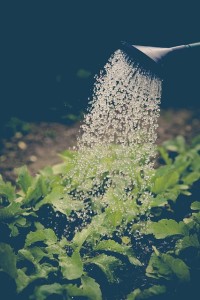 You live in Seattle, where space is at a premium. You may not have a large lawn for tank placement, but you still want to live sustainably. You’ve already reduced your household and business energy usage and you recycle and reuse products to extend their life. So, how can you capture a vital resource by collecting rainwater in Seattle’s tight living space?
You live in Seattle, where space is at a premium. You may not have a large lawn for tank placement, but you still want to live sustainably. You’ve already reduced your household and business energy usage and you recycle and reuse products to extend their life. So, how can you capture a vital resource by collecting rainwater in Seattle’s tight living space?
- Just like rural homeowners, urban households can benefit from rainwater collection. Unlike rural homes, most city homes have less space available for storage. Slim line water tanks and underground storage options allow those who live in an urban environment to collect, store, and use rainwater for a number of purposes.
 You do not need a lot of storage capacity for supplemental use of rainwater. For every inch of rainfall, a thousand square feet of surface will yield 623 gallons of water. A 2,000 square foot roof in Seattle will yield over 44,000 gallons of water annually. Even with only 3,000 gallons of storage, winter use can be as much as 100% or can be stored for summer irrigation demands. See chart below – an average 2,000 square foot roof yields over 44, 000 gallons with only 3,000 gallons of storage capacity based on 120 gallons of daily demand. (click the image for larger view)
You do not need a lot of storage capacity for supplemental use of rainwater. For every inch of rainfall, a thousand square feet of surface will yield 623 gallons of water. A 2,000 square foot roof in Seattle will yield over 44,000 gallons of water annually. Even with only 3,000 gallons of storage, winter use can be as much as 100% or can be stored for summer irrigation demands. See chart below – an average 2,000 square foot roof yields over 44, 000 gallons with only 3,000 gallons of storage capacity based on 120 gallons of daily demand. (click the image for larger view)- Rainwater is a clean source of water that needs very little treatment for irrigation, toilet flushing, or laundry facilities. Further treatment with UV disinfection allows for whole house demands including drinking water. With more demands on our water districts due to drought conditions, every drop helps. Why not benefit from this natural resource, rather than send it down the curbside drain?
It is possible to further your conviction to live a sustainable life with rainwater collection. The investment can pay off not just for you, your family, and your business, but for all of us who seek to make the best use of rainwater, a vital resource.
This article was originally published under the title How Can Urban Homes Benefit From Rainwater Collection?



 The
The 
 The lack of water caused by the California drought affects our food supply in more ways than just the ability to grow crops. It has had deep impact on the workers in this industry and the businesses that employ them. When the cost of water for a 10-acre farm parcel goes from $3,200 to $33,000 in one year, you’ve got a business problem. In 2013, the California agriculture industry employed about 349,000 people.
The lack of water caused by the California drought affects our food supply in more ways than just the ability to grow crops. It has had deep impact on the workers in this industry and the businesses that employ them. When the cost of water for a 10-acre farm parcel goes from $3,200 to $33,000 in one year, you’ve got a business problem. In 2013, the California agriculture industry employed about 349,000 people.